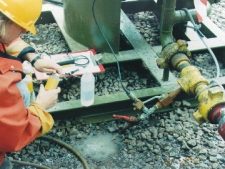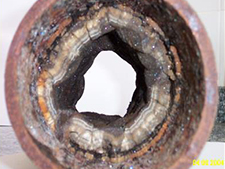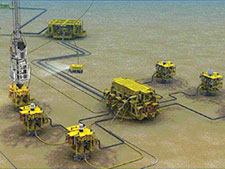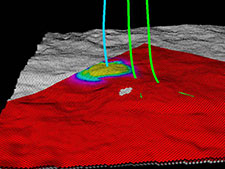The compositions of formation water samples are used in a wide variety of applications during field development planning and production including:
- Calculation of OIIP.
- Scale predictions and inhibitor testing.
- Corrosion predictions, material selection, and inhibitor testing.
- Souring predictions.
- Hydrate predictions and inhibitor testing.
- Identifying emulsion and formation damage risks.
- Baseline data for monitoring (scale, corrosion, hydrate, emulsions, souring, injection water breakthrough).
- Identifying sources of formation water (e.g. casing leaks, water-producing zones, etc).
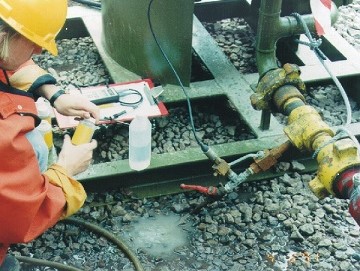
Oil Well Sampling
Formation water samples are often obtained from appraisal wells during formation testing or DSTs. Occasionally formation water samples are obtained from core samples (e.g. via centrifugation; see McCartney, 2012; recent publications). The samples may be analysed on the platform or at the rig site but more commonly they are transported to an onshore or permanent laboratory for analysis.
Ideally, good quality (i.e. representative) formation water samples and analyses should be acquired for the above applications but this can be a challenge because:
- No samples may have been collected (i.e. either through choice, lack of opportunities or operational problems).
- Although, it is not unusual for formation water compositions to vary across the field, between producing formations, and between the water- and hydrocarbon-legs, insufficient samples may have been obtained to characterise these variations. For example, often only one formation water sample will have been collected from the water-leg of a producing zone in a single well in the field.
- The samples may have been affected by drilling fluid contamination, cooling and de-pressurisation, or poor sample handling/preservation procedures.
- The analyses may have been affected by reporting errors, analytical errors, or the use of inappropriate analytical methods.
Where unrepresentative formation water analyses are used in the above applications, or where they have been poorly estimated (e.g. because analyses are not available), decisions and plans made on the basis of the results of the applications may be in error. In the worst cases, significant and/or unexpected increases in CAPEX and OPEX may result. Real field examples include:
- Field A. Due to drilling fluid contamination, the Ba concentration of a formation water sample was erroneously low. But, believing this concentration to be correct, the operator selected seawater injection for reservoir pressure support. Subsequent produced formation water samples showed that the formation water Ba concentration was actually much higher. Due to the unexpected BaSO4 scale risk, the production wells had to be squeezed much more regularly than originally planned. In this case, OPEX (and costs overall) would have been much lower had a reliable Ba analysis been obtained in the first place, hence ensuring selection of low sulphate seawater injection for reservoir pressure support.
- Field B. The development of this offshore field with a MEG regeneration unit might never have gone ahead after high organic acid concentrations were found in the formation water. With these concentrations, the frequency of fresh MEG deliveries would have been so high that the development would not be feasible. But, on further investigation it was found that the high organic acid concentrations were just an artefact of a preservative added to the sample. This discovery allowed the project to proceed successfully.
These, and other examples, show how important it is to try to obtain representative formation water samples and analyses, and also to demonstrate that they are representative. In these respects, we can help you by:
- Providing advice on the acquisition of representative formation water samples and analyses.
- Assessing the quality of your formation water samples and analyses.
- Estimating formation water compositions for you where yours are found to be in error or where they have not been acquired.


